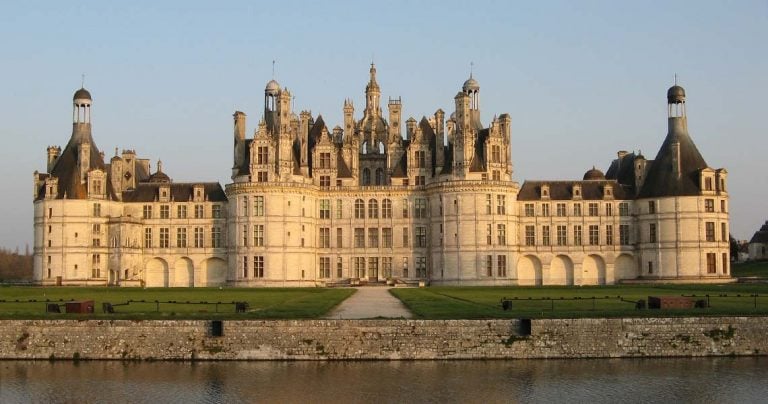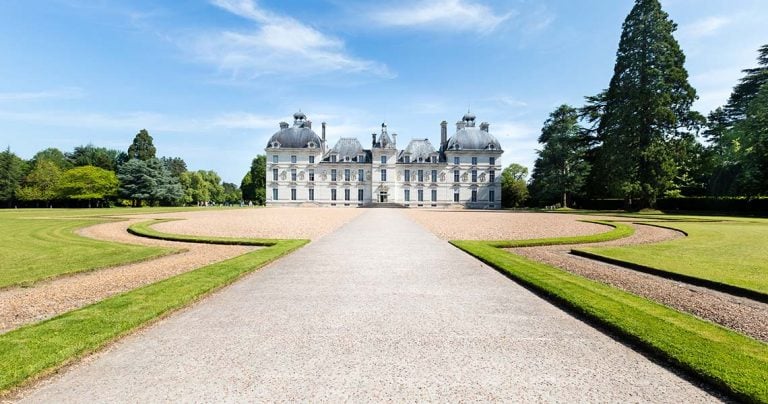Château d’Azay-le-Rideau, the Art of Restoration
The Château d’Azay-le-Rideau has neither the scale of Chambord, the patronage of Chenonceau, nor Amboise’s lineage. However, with its reflection mirrored in the waters of the Indre and set in a romantic English garden, it is one of the most underrated châteaux of the Loire.
An early gem of the Renaissance period, the French writer Honoré de Balzac described Azay-le Rideau as:
In climbing a ridge, I admired for the first time the château d’Azay, a faceted diamond set on the Indre, mounted on stilts, masked by flowers.
Honoré de Balzac
Located on an idyllic island with the Indre River providing the perfect moat and just outside the picturesque village of Azay-le-Rideau, it is one of the few châteaux built by aristocracy rather than royalty.
Today, however, it is a National Monument owned by the State and serves as an excellent example of state-sponsored restoration. And what is a nationally owned Château without the ubiquitous drone flyover:
Short History
What would a Loire château be without a history of violence, deceit, conspiracy, misappropriation and confiscation? Azay-le-Rideau is up there with the best of them.
Azay probably derives from the Latin Asiacus, the name of the land’s original owner. The village itself dates back to Roman times. The name Asiacus has some nasty connotations. In 546, the Roman inquisitor Ioannis Asiacus, a fanatical monk, carried out mass exterminations of gentiles in Asia Minor, all in the name of Christianity.
In the 12th century, the then-owner of the land, Lord Ridel d’Azay (Rideau comes from Ridel), constructed a fortress on a bend in the Indre to guard the road between Tours and Chinon. Incidentally, his vicious nature earned him the nickname ‘Child of the Devil’.
The bloodiest incident in Azay’s history occurred in 1418 during the Hundred Years’ War between France’s Burgundian and Armagnac dynasties. The Crown Prince (later Charles VII), while fleeing the Burgundians in Paris for the Armagnac haven in Bourges, was mocked by the Burgundian soldiers staked out in Azay-le-Rideau. Enraged, the future King had the town and the fortress burned to the ground and executed 350 soldiers and officers.
Rather horribly, the small town became known as Azay-le-Brûlé (brûlé means ‘burnt’) and was referred to as such till the 18th century.
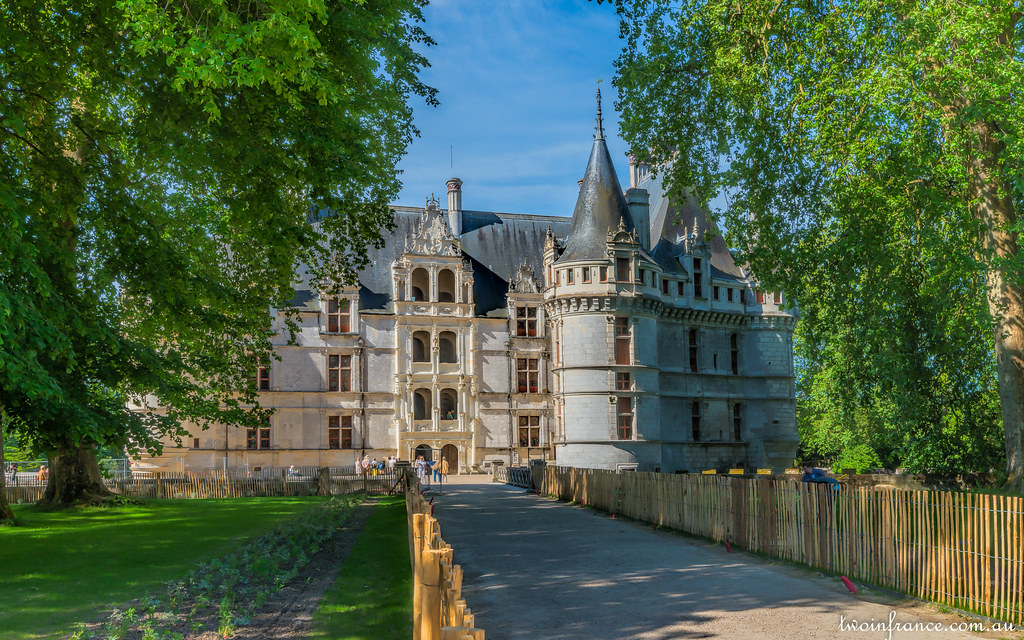
Gilles Berthelot was the following significant figure to make an appearance on the stage of Azay-le-Rideau. He was an ambitious financier who had inherited much of the land around Azay-le-Rideau. In a smart move, he married Philippe Lesbahy, who owned the rest of the territory.
In 1518, in keeping with his status as the King’s notary and secretary, Gilles began constructing a grandiose château on the newly reunited estate.
Gilles was often absent with his Royal duties. So Philippe, as Catherine Briçonnet had done at Chenonceau under similar circumstances, supervised the works and had to make many decisions, justifying the often expressed impression of feminine creation.
The L-shaped plan was not an original feature but evidence that the Château could not be completed. Gilles never managed to move into his dream Château.
In 1527, François I, seeking someone to blame for his defeat at Pavia, took it out on the war treasurers, financiers and creditors. Gilles took sides with his cousin Semblançay, the King’s Superintendent of Finances. When the King executed Semblançay, Gilles fled to Metz and then to Cambrai, where he died in 1529.
François I seized the Château in 1528 and handed it to Antoine Raffin, his companion-in-arms at Marignano and Pavia.
Little work was carried out by Raffin, with only two wings of the four-sided plan being finished. Thus, the Château preserved the distinctive, albeit unintended, L-shape we see today.
The Château remained with the Raffin family until the 18th century. During this period, on June 27, 1619, Louis XIII spent the night in Azay-le-Rideau. Later, his son Louis XIV was also a guest in the same room.
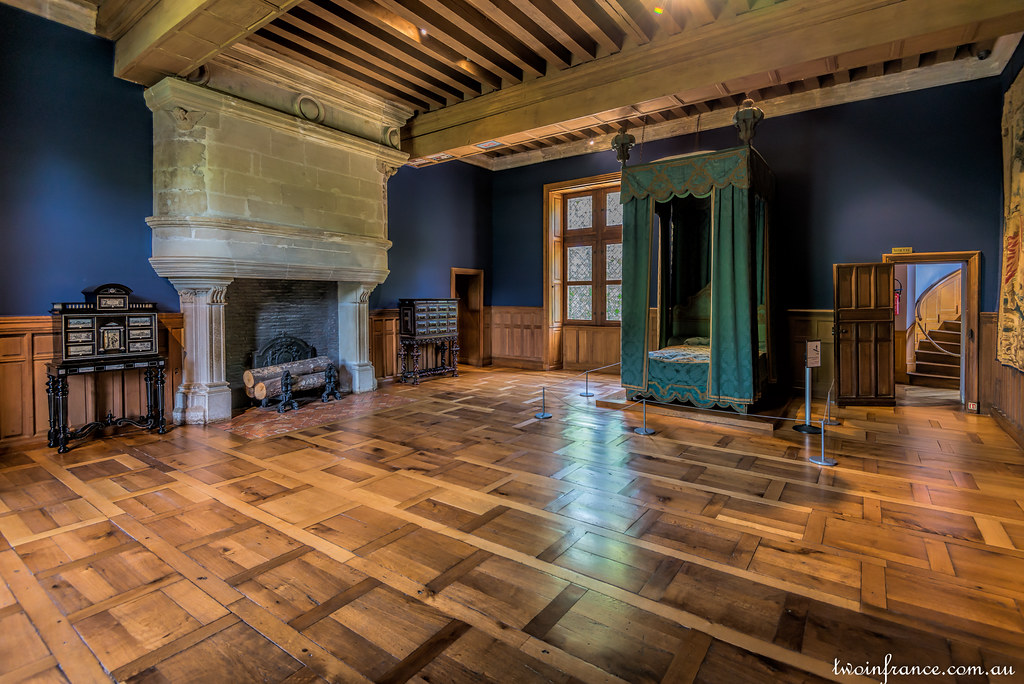
The Marquis and Marquess de Biencourt acquired the Château in 1791 and undertook to restore it to its former glory. The Biencourt family survived the Revolution without any crises, executions or demolitions.
During the Franco-Prussian War (1870-1871), the Château billeted Prince Frederick Charles of Prussia and his general staff. The tale goes that during supper, a heavy chandelier fell from the keystone in the kitchen ceiling onto the Prince’s table and almost killed him. Frederick thought it was an attempt on his life. His officers had a hard time persuading him not to set fire to the Château in retaliation.
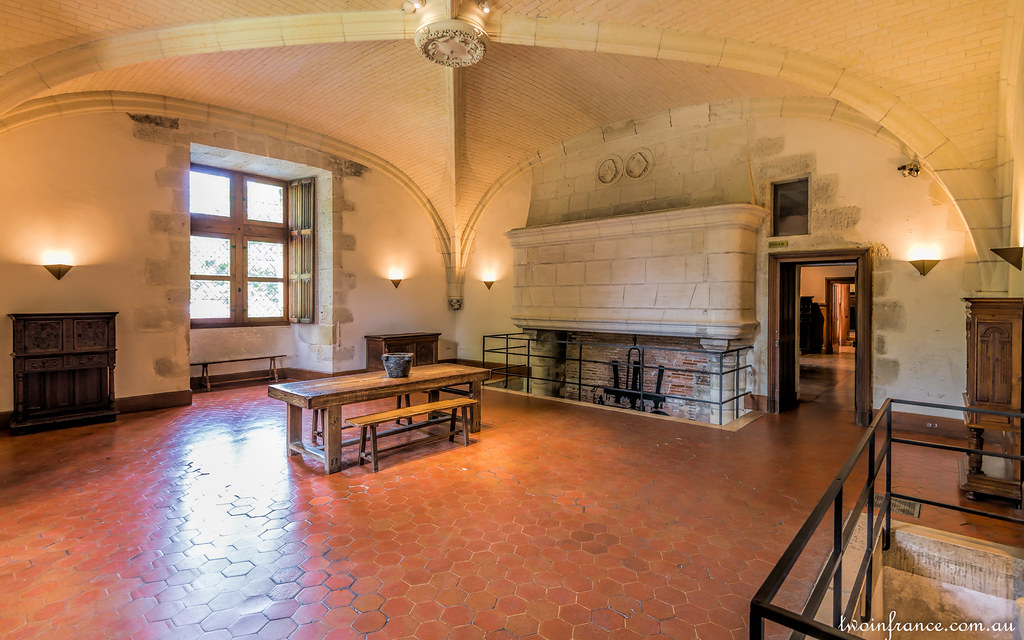
After the War, the building once more became the property of the Marquis de Biencourt, but financial problems forced him to sell it. The French government acquired the Château and part of the grounds in 1905, thus ensuring its continued restoration and maintenance.
The English Gardens
ln 1810, the Marquis de Biencourt began draining the meadows to create an English-style garden, with paths from which to admire the château’s facades.
The park underwent a significant restoration operation in 2014. The work focused on the renewal and maintenance of the tree heritage in the spirit of the earlier park. Also undertaken was the restoration of paths, walkways, bridges, and new lighting and irrigation supplied with river water.
The landscaped park contains many exotic species from around the world: cedars, redwoods, cypresses and ginkgo trees from Asia.

The iconic effect of the Château’s exterior mirrored on water, seen in many photographs, was made possible in 1950 with the removal of a terrace in front of the Château and the slowing of the river by weirs.
In summer, a Son et Lumiere is projected onto the castle walls every evening.
Inside the Château
The Centre des Monuments Nationaux had little to work with when it acquired the Château in 1905. Over the years, the Centre has built up a magnificent collection of art and furnishings from the 15th to 19th centuries to create a Renaissance museum essentially.
Tapestries and paintings inspired by mythology, objects of daily life, pottery and antique chests, and fine and rare tiles spread throughout the rooms of the Château.
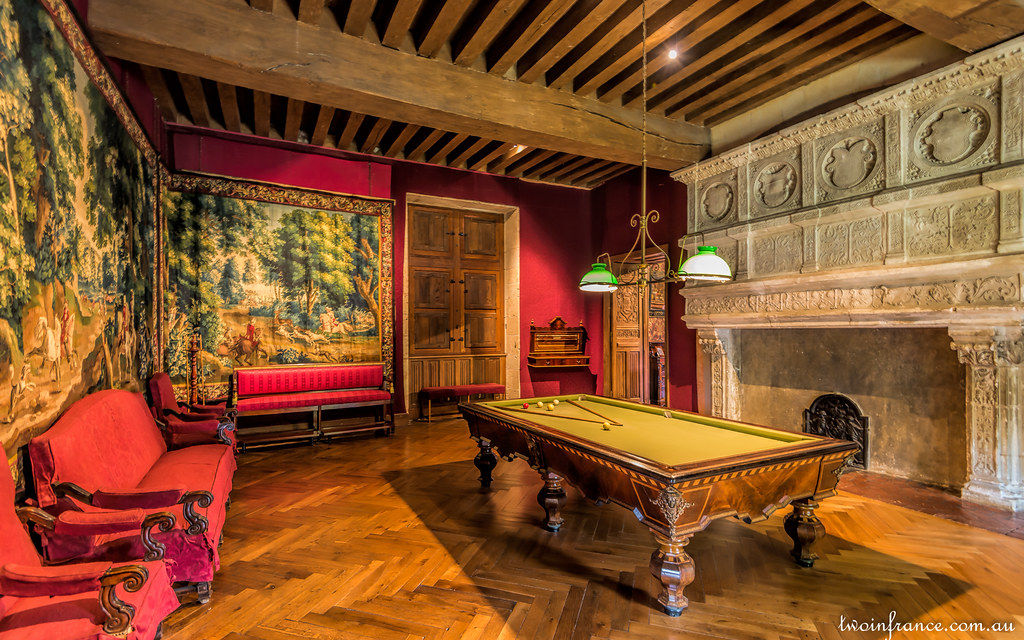
The visitor enters the Château via the unique Grand Staircase. The trademark of Renaissance architecture, straight stairs were placed in the Centre of a building instead of spiral stairs in a corner tower. The staircase can then divide the living space between the apartments of the householder and those of the King.
The Grand Staircase connects three floors, each with its loggias (mezzanines) and open bay windows, providing a view of the surrounding area. Each flight has an ornamental ceiling with handrails carved from the stone wall.

The Great Attic is a testimony to the skill of Renaissance carpenters. In 1517, François I authorised Gilles Berthelot to use wood in the Royal Forest of Chinon to build his château. Studies to date the wood has established that the builders cut the trees during the winter of 1518-1519. The structure has survived the centuries unscathed. In the nineteenth century, the attic was converted into apartments for the servants.

From January 2015 to June 2017, the monument benefited from a significant restoration undertaken by the Centre des Monuments Nationaux.
Unfortunately, in France, there remains no château with the original decor. The Centre des Monuments Nationaux decided to revive Azay to see a room from the 16th century near its original state for the first time.
A scientific committee researched every detail of the 16th-century lifestyle. The Renaissance Chamber, thought to be that of Philippe Lesbahy, is one result of the committee’s painstaking work. Shimmering silk velvet and embroidered fabrics copied from originals in contemporary paintings adorn her bed. The soft furnishings required 510 hours of sewing to make. Although tapestries were a well-known way of keeping a room warm in winter, so was rush matting, as local inventories, paintings and engravings have uncovered.

The Village
The Château stands on the edge of the Azay-le-Rideau village, whose main streets converge at its entrance. Like the Château, the town has survived the centuries.
To reach the Château, you take charming cobbled streets lined with Renaissance buildings, boutiques, local products artisans, galleries and restaurants. The roads are narrow, and parking is limited. Get there early and finish your visit (1-2 hours) with lunch in one of the many restaurants.
In addition, Château de l’Islette and the Musée Balzac are nearby.
There is something for everyone at Azay-le-Rideau. Whether you’re into Renaissance architecture, history, art, furnishings, gardens or local villages, Azay will not disappoint.
The Château is testimony to how painstaking research can accurately reveal the secrets of history, restore buildings to their former glory and help preserve the heritage of a country.
Information
Rue de Pineau 37190 Azay-le-Rideau France
+33 2 47 45 42 04
9:30-10 am to 5:15-7 pm (seasonal variations)
Car: A10 from Paris (exit n°24). Train: TGV Paris to Tours then TER to Azay-le-Rideau
azay-le-rideau.monuments-nationaux.fr





